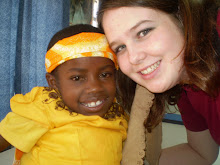8. Drill pilot holes. I kept the removed pieces for this step. I started with the new leading edge in place, and put the old trailing edge over it to show me where the holes in the spar go. I drilled about 2 holes per bay, then took everything apart. Next, you SHOULD do the same with the new trailing edge and old leading edge. I didn't which gave me a bit of a challenge. Once the old piece is cut, you lose all reference for straight and not twisted when you go to drill more holes. Keeping everything straight was the biggest challenge for me.
9. Drill the rest of the holes. Once you have pilot holes drilled, cut the old piece into two down the middle, and attach it to the new skin by the pilot holes. You use the old skin as a guide to drill all the new holes.
10. When all else fails, ask the resident welder to build you a jig. He saw me struggling to keep things lined up, and recommended it. He took about 15 minutes to make the jig, and it was well worth it. It kept the spar straight, and just required something under the trailing edge to keep the ribs aligned.
11. Check alignment and trim pieces. After all the new pieces are drilled, put it all together with clecos to check alignment. I discovered that I had to remake a piece at this step, because the holes wouldn't line up. As you remove pieces, mark them for trimming down to the final size. Another way to mark pieces for trimming is to go back to the old skins, and use them as a reference for where the edges need to be. Since the pieces are already folded, you can't just shove them in the shears and stomp. I used a combination of the pneumatic shears and a die grinder to make as straight of lines as possible, then cleaned all the edges up with a scotch brite wheel.
12. Rivet everything together! As I observed during removal, half of the leading edge was riveted on, while everything else was cherried. So depending on who the availablity of someone to buck rivets for you, you can either start with the trailing edge, or the riveted side of the leading edge. I have heard rumors of guys who do the whole thing with only a couple cherries, but I am not that good. We annealed (heat with a heat gun, then quench) the rivets before shooting to make shooting easier. On the cherry rivets, shop practice is to dip them in JB weld to help hold everything together. Also, a pneumatic puller makes life awesome in this project.
13. Paint. After both flaps are rebuilt, it time to have some fun! At this point, its the usual paint prep: etch and alodine! we have a grate in the middle of the hangar, so if its a piece too big to do in the sink, we pull up a table, sawhorses, or something over the grate to make cleanup easier. Then the pieces get hung in the paint room to dry. When ready to spray, its simply mix paint, put it in the gun, and go for it.
14. Rhino-line the bottom. After the paint is dry, some mask off everything you don't want rhino-liner on. I'm a bit unclear as to how the spraying procedure of this stuff is going to go, so I will let you know when I get it done.
overall, its been a great learning experience for me. I only have one flap done, so I will apply everything I learned from doing the first one into working on the second one when things are slow enough in the shop for me to work on a project!
